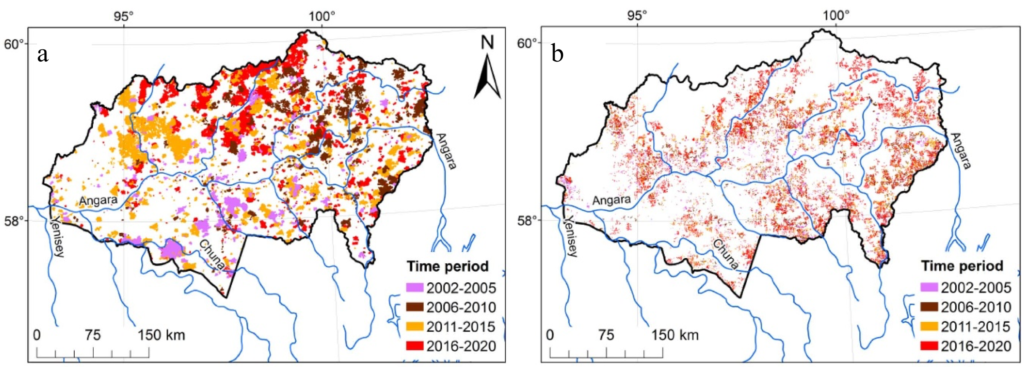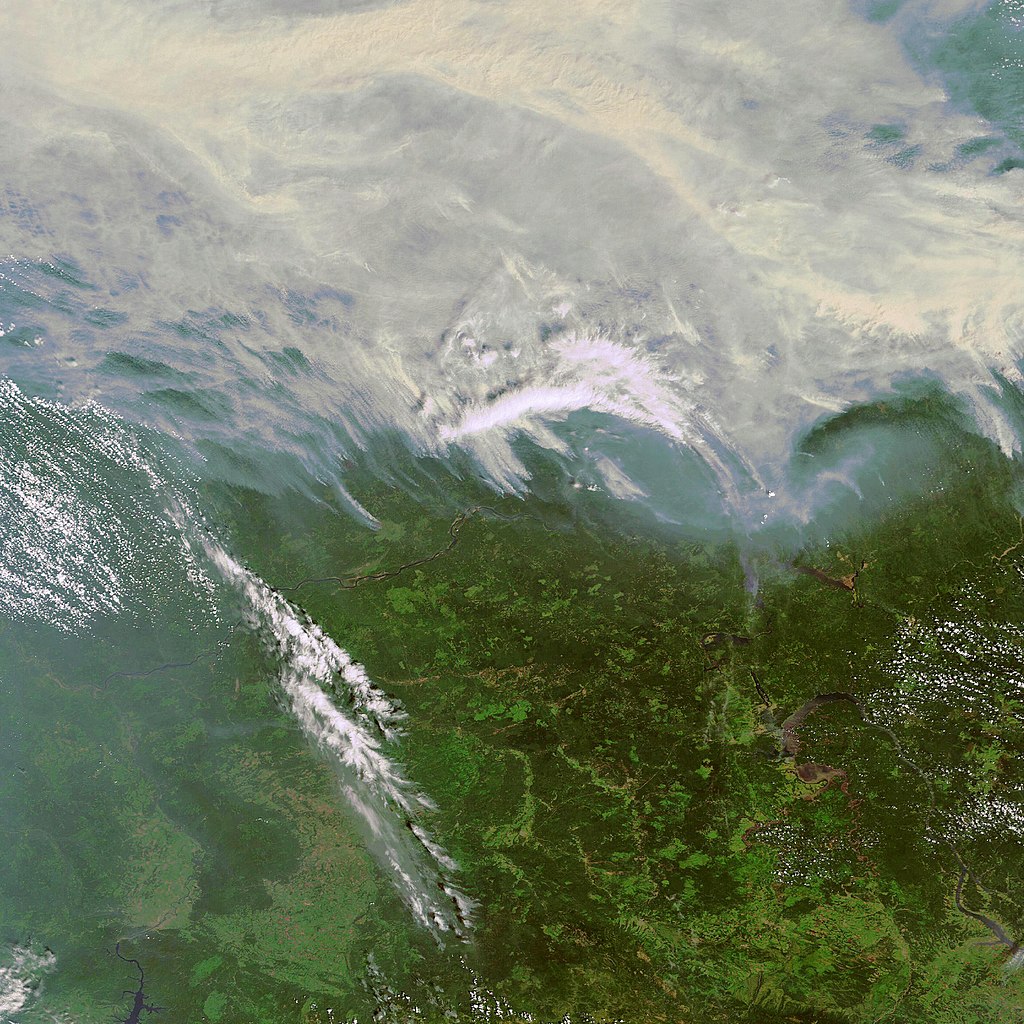Human-caused forest disturbances are destroying and degrading primary forests and are a critical global environmental issue. This is particularly the case within boreal Siberia, which is home to over one-quarter of the world’s remaining primary forests and is subject to increasing fires, logging, and other disturbances.
Despite this, detailed attribution and trends in disturbances are lacking for most Siberian regions. The Angara region located in the southern taiga of Central Siberia has been a hotspot of forest change in Eurasia, yet still contains vast tracts of remaining primary forests.
In our study we estimated fire and logging disturbances using MODIS and Landsat satellite imagery for the period 2002–2020 across the Angara region and analyzed the resulting trends.
Average annual burned and logged area was about 220 and 31 thousand ha or 2 and 0.3% of the study area, respectively. In total, about 4.1 million ha (38% of the region) and 0.6 million ha (6% of the region) were disturbed by fires and logging, respectively. Both disturbance types showed increasing trends in annual area affected.
Spatial analysis showed that almost 50% of fires were ignited within 2 km of anthropogenic features such as settlements, roads and logged areas. Almost 5% of the Angara region was burned two or more times during the 19 years of observations. Improved and strictly-enforced conservation and management policies are required to halt continued forest degradation in the Angara region and similarly-affected boreal forests in Siberia.

Article authors
Brendan Rogers
Tatiana Shestakova
Additional authors
Evgeny Shvetsov, Elena Kukavskaya, and Jocelyne Laflamme.
Reference
Shvetsov, E. G., Kukavskaya, E. A., Shestakova, T. A., Laflamme, J., & Rogers, B. M. (2021). Increasing fire and logging disturbances in Siberian boreal forests: A case study of the Angara region. Environmental Research Letters, 16(11), 115007. https://doi.org/10.1088/1748-9326/ac2e37



